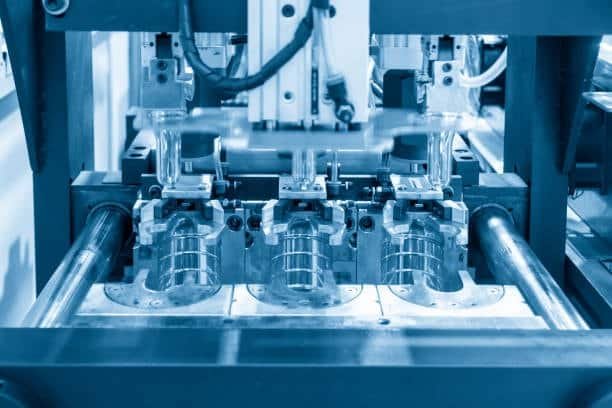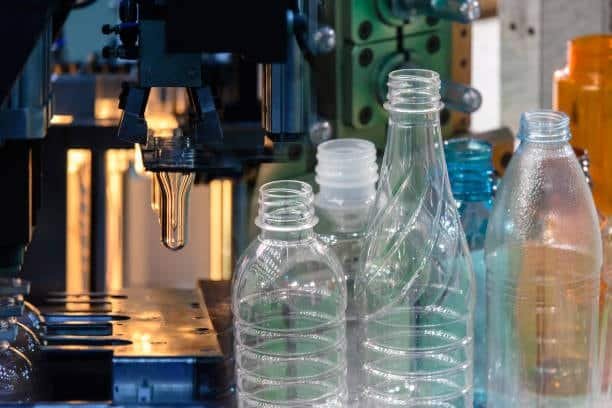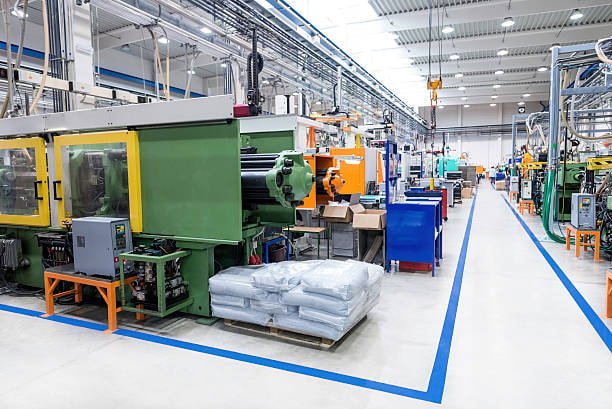Read through the main differences to understand the comparison of blow molding vs injection molding. Get to know the prices, uses, benefits and the best manufacturing process which best fits your requirements of the products.
To obtain the best of manufacturing plastic products through proper molding process, product quality, cost, and molding process selection are coming into play. Among the most common manufacturing technologies that form plastics, there are two namely the blow molding technique and the injection molding technique, which produces solid components whereas blow molding focuses on hollow products. The establishment of the inherent differences in these processes is essential in the determination of the most appropriate production strategies that can be used by manufacturers, product designers and the enterprises.

Blow molding and injection molding have changed the modern manufacturing process in a way that has made it possible to mass-produce such hollow plastic products as plastic bottles and automotive parts. Although, the two processes consist of the heating of plastic materials and pressing these materials into the preferred make, there are great disparities in the methodologies, application and results. In this detailed guide, you get to understand the complexities of every process, which will enable you to make good decisions concerning your manufacturing demands.
Understanding Blow Molding Process
Blow molding is a particular manufacturing method that is used in production of hollow plastic items having very thin walls. It all starts when thermoplastic materials are heated until they have been melted creating what is referred to as a parison or preform. This hollow tube of plastic is inserted into a mold cavity after which air is blown through it by compressed air, thus expanding the plastic and making it fill the interior side of the mold.
A blow molding process is very useful in making containers, bottles and thin walled hollow parts where a constant thickness is required. The method has an outstanding material distribution and is capable of producing complex hollow shapes that can only be done as a result of other manufacturing methods in an impossible way or cost prohibitive blow molding is used. It is especially appreciated in the process of creating containers that not only are very strong but also very light in weight with low amounts of material wastage.
Blow molding has a number of variants such as extrusion blow molding, injection and stretch blow molding. Each variation is tailored to fit particular product demands and manufacturing quantities so as to make blow molding a flexible tool to solving numerous manufacturing problems.
Understanding Injection Molding Process

Injection molding is an incomparably accurate and all-inclusive plastic creation procedure accessible today heavy duty hydraulic rams. The technique is that plastic pellets or granules are melted in a hot barrel and forced under pressure into a fine-machined plastic mold cavity under high pressure as a molten liquid. After the plastic has solidified after cooling down, the mold is opened releasing the finished parts injection molding compared.
The method has high forming capabilities producing a solid plastic part of high dimensional tolerance and surface finish quality. High complexity, detailed geometries and tight tolerances are difficult to make with other processes and can be produced in injection molding blow molding compared. The automation of this process is very advanced, and allows regular standards of quality and heavy levels of production to be attained after the initial set up has been taken care of.
The adaptability of injection molding also covers the fact that it can be utilized with a wide selection of thermoset and thermoplastic materials. Also, a wide variety of materials and colours can be used with more than one being injected simultaneously into the mold in one molding process high density polyethylene; other components may be inserted into the mold also during the molding cycle and complex assemblies can be produced in this way.
Key Differences in Manufacturing Applications blow molding and injection
The most basic difference between blow molding as well as injection molding is in the desired use and the nature of goods produced. Blow molding is solely applied on products like thin walled parts such as bottles, containers, fuel tanks, and packaging products. The technique is optimum where you require to make products that have internal voids and have the walls that are of a relatively thinner side.
Injection molding on the other hand is mostly applied in solid (plastic) parts or parts with complicated insides vacuum forming can produce. The process is ideal when it is used to produce electronic case, auto parts comparison to injection molding, medical equipment, consumer and precision parts with close tolerances and detailed features.
The decision made between these two processes usually depends on whether your product has to be hollow or solid. Nevertheless, there are other factors that determine the best manufacturing to use with respect to the production quantity, material needed, budget considerations, and that molding is generally cheaper for smaller volume production of complex
Анализ затрат и экономические соображения extrusion blow molding
The factor of cost has a very major role in determining between blow molding and injection molding. Blow molding tends to have less upfront expenses with tooling cost, which is an advantage to low volume productions, or start-up businesses that may have limited start-up capital injection stretch blow molding. The blow molds tend to be less complicated and cost less to create than injection mold tools, primarily because they generate less excess material.
The economics of injection molding can scale better on high volumes and the initial tooling and equipment are costlier, though the dynamics of the long-term economics can work to the advantage of high volume. The cost of injection molds is high because they are highly precise and complicated; this is warranted by the quality of parts, tolerance, and secondary operations that are minimized. The injection molding per-part cost normally falls dramatically as it crosses over into volume production molding differences and comparison.
The processes also differ in the costs of materials, impacting their production volume manufacturing technologies . Blow molding may be more material-efficient on hollow parts as only material required in the thickness of the wall is used. Injection mold which can take more material in solid parts has superior material utilization with features of sophisticated runner systems and built in cycling powder.
Quality and Precision Comparison
Depending on the quality and precision needs, one or the other of the molding techniques can be more suitably applied in an application. Injection molding has high dimensional accuracy that can be within tolerance of zero plus or minus 0.005 inches on many parts. Complete filling of the cavities with high pressure injection technique causes super fine quality of surface finish, which is ideal where there is a need to have a visible part or component that has to be fitted off perfectly blown molded products.
Although blow molding is not as precise as injection molding, it provides good quality based on the application it is compared to blow molding vs supposed to serve. The process offers uniform wall thickness, distribution and fine finishing of containers and packaging. Still, close tolerances of outside dimensions may be difficult to obtain because of the expansion that is part of the blow-mold process injection molding differences.
The differences also exist in terms of quality control considerations in the processes credit shutterstock.com pixel b. With injection molding, there are more parameters which manufacturers can control the accuracy of the process in order to control the quality of the production by means of temperature, pressure and timing image credit shutterstock.com pixel
. Material properties, setting of the parison programming, and optimization of the molds are significant key elements with respect to blow molding quality of complex solid components.
Material Compatibility and Options
The materials used in both kinds of molding are thermoplastic, however there is a wide disparity between the compatibility of the material used with each of these processes. The broadest range of plastic materials is covered with injection molding encompassing standard thermoplastics, specialty compounds and engineering plastics injection molding forces plastic. The materials of varying viscosities, processing needs, and melting points can be used in the process injection blow molding injection molding machine.
Blow molding is best suited to the materials that possess good melt strength as well as flow properties during expansion molding definition and comparison. Typical ones are polyethylene, polypropylene, PET and PVC. The material should also be strong enough when heated to avoid tearing during the expansion of the blow molding yet it should be okay to be stretched into the shape of the mold.
Blowing mold material selection can be end-use application-based as in the case of containers containing certain chemicals, used barrier properties or food containers specification compared to blow molding. Selection of materials for injection moulding is more concerned with mechanical properties, dimensional stability and aesthetical requirements of the resulting parts.
Production Volume Considerations
The amount of production volumes has a crucial effect on the selection of blow molding and injection molding. Blow molding is suitable in medium and high volume production of containers and hollow parts. It is efficient due to packaging requirements and consumer products can be cost-effective with the process that attains high production rates with comparatively simple tooling molding machines.
The injection molding has greater range when it comes to variations in volume production. On a low volume of specialty items, and perhaps a high-volume mass production, injection molding can be cost effective although it needs more investments to bring it into production cheaper than injection molding. The scalability of this process enables its manufacturers to begin small production runs and increase this production later when their demand increases plastic into a mold.
The difference between the processes is in the cycle times, injection molding usually provides faster cycles with small to medium component pieces and high production volume manufacturing. Blow molding cycles are relative to the part size, and wall thickness, however, cycles can be optimized in relation to large amounts of containers manufactured. Both processes allow using multi-cavity tooling with the capacity to produce a considerable number of products molding compared to blow.
Заключение
Blow molding and injection molding are both vital in contemporary plastic production. The key to success is putting the correct process to your application requirements, as blow molding is generally preferred for hollow shape plastic blow molding. Don t overlook the thought of collaborating with knowledgeable transportation providers such as the GWT Worldwide to make sure your manufactured products arrive international markets efficiently, whether delivering blow-molded containers or accurate injection-molded parts all over the globe injection molding and blow.

